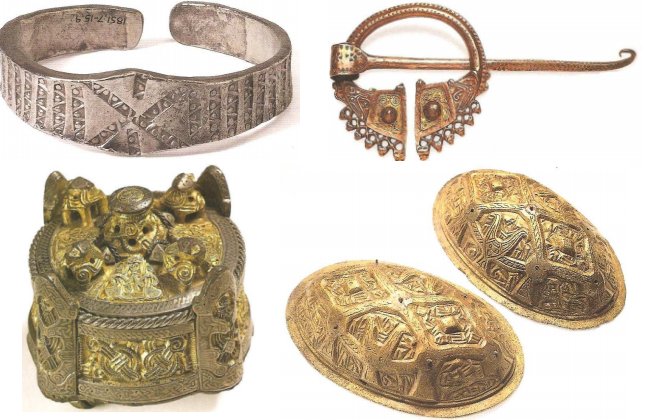Viking Fashion: Men And Women Were Vain And Very Clean During The Viking Age
Ellen Lloyd - AncientPages.com - There are many myths and misconceptions about the Vikings. One is that they were dirty and did not pay attention to their appearance. Few things can be further from the truth. Archaeological discoveries reveal that Vikings were cleaner than most and rather vain.
Credit: IMDb - Fair use
Personal Hygiene Was Very Important To Vikings
Scientists have discovered tweezers, combs, razors, nail cleaners, ear cleaners, and toothpicks inside Viking tombs. These artifacts show that people of the Viking Age took great care in personal grooming.
In his chronicle from 1220, John of Wallingford described the Vikings as well-groomed heartbreakers.
"They had also conquered, or planned to conquer, all the country's best cities and caused many hardships for the country's original citizens, for they were - according to their country's customs - in the habit of combing their hair every day, to bathe every Saturday, to change their clothes frequently and to draw attention to themselves by means of many such frivolous whims.
In this way, they sieged the married women's virtue and persuaded the daughters of even noble men to become their mistresses," Wallingford wrote.
Viking combs. Credit: Mariana Muñoz-Rodriguez
Bone pins, delicately carved from animal bone, were used to fasten clothing or as hair decorations. Vikings paid plenty of attention to their beards and hair. Bones and antlers were carved to create hair combs, which became prized possessions. Hair had to be styled right, and the beard could be short or long, but it was always well-groomed. Archaeologists have confirmed that several Viking combs were produced in Hedeby, a major trading center during the Viking Age.
Viking women, in most cases, had long hair tied into a knot on the back of the head. The knot was often decorated with colorful tape braided into the hair. The women also wore a bonnet or a scarf around their heads.
What Viking outfits looked like remains a mystery because knowledge of Viking fashion is based on fragments of clothes discovered in ancient tombs. Unfortunately, most Viking clothes have rotted away and disappeared when archaeologists excavated their tombs.
It is also important to remember that people living during the Viking Age never spoke of themselves as Vikings. To understand why ancient Scandinavians did not refer to themselves as Vikings, one must remember the meaning of the word Viking. In Old Norse, an old Scandinavian language, the word appears as "vikingr", which designates a person, while "viking" designates a practice. Therefore, it is better to say there are some things we do know about Viking Age fashion.
Our knowledge about Viking fashion is based on artifacts discovered in ancient tombs. National Museum of Denmark
Scientists have successfully produced clothes our ancestors wore by analyzing archaeological finds of textile tools, textiles, skins, and fibers from graves and settlements. For example, Viking Age women usually wore long dresses or skirts that went down to the feet. These dresses were held together with a strap over each shoulder. Men wore the same materials as the women. The inner layer usually consisted of a linen kirtle—a long shirt the men pulled over their heads. On the outside, the typical Viking man wore a wool coat.
Reconstructed woman's and man's costumes from Well-dressed in the Viking Age. Credit: Charlotte Rimstad
Like today's men, Viking men wore trousers. These could be either short or long, and they were usually sewn in the style of pantaloons. These trousers only reached down to the men's knees.
Vikings Loved Colors - Especially Blue And Red
Men usually wore a hat, whereas women could choose between a small hat and a scarf. What has also been discovered is that Vikings loved various colors. The most popular ones were blue and red.
Vikings were also familiar with luxuries such as silk and sewn-on ribbons with silver and golden threads. However, only a few elite members could wear these exclusive fabrics, which were imported worldwide.
Ancient Viking jewelry. Credit: Fitzhugh, William W. - Vikings: The North Atlantic Saga
Astonishing Norse jewelry discovered in hoards and burial sites reveals that Vikings were highly skilled craftsmen. Viking jewelry was beautifully made, and it's still reproduced today.
Vikings certainly paid great attention to beautiful garments and accessories. Based on all these archaeological findings, it's fair to say that Vikings were by no means badly dressed and dirty.
Written by Ellen Lloyd - AncientPages.com
Copyright © AncientPages.com All rights reserved. This material may not be published, broadcast, rewritten or redistributed in whole or part without the express written permission of AncientPages.com
More From Ancient Pages
-
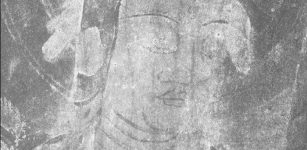 1,300-Year-Old Paintings Depicting Eight Buddhist Saints Revealed By Infrared Cameras
News | Oct 1, 2020
1,300-Year-Old Paintings Depicting Eight Buddhist Saints Revealed By Infrared Cameras
News | Oct 1, 2020 -
 Apsara Carvings Dated To 12th Century Uncovered At Takav Gate In Angkor, Cambodia
Archaeology | May 5, 2022
Apsara Carvings Dated To 12th Century Uncovered At Takav Gate In Angkor, Cambodia
Archaeology | May 5, 2022 -
 Eleanor Of Aquitaine – Mother Of King Richard The Lionheart And One Of Most Powerful Women Of Middle Ages
Featured Stories | Feb 26, 2018
Eleanor Of Aquitaine – Mother Of King Richard The Lionheart And One Of Most Powerful Women Of Middle Ages
Featured Stories | Feb 26, 2018 -
 Sodré Astrolabe, Found On Portuguese Armada Shipwreck Is The Oldest In The World
Archaeology | Mar 19, 2019
Sodré Astrolabe, Found On Portuguese Armada Shipwreck Is The Oldest In The World
Archaeology | Mar 19, 2019 -
 Ukko: Karelian-Finnish God Of Thunderstorms, Harvest, Patron Of Crops And Cattle
Featured Stories | Apr 2, 2020
Ukko: Karelian-Finnish God Of Thunderstorms, Harvest, Patron Of Crops And Cattle
Featured Stories | Apr 2, 2020 -
 Kindred Spirits: Why Did The Irish Build A Monument In Honor Of Native Americans?
Ancient History Facts | Oct 22, 2016
Kindred Spirits: Why Did The Irish Build A Monument In Honor Of Native Americans?
Ancient History Facts | Oct 22, 2016 -
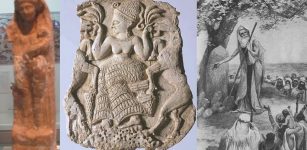 Lost And Forgotten Goddess Asherah – Queen Consort Of The Sumerian God Anu And Ugaritic God El
Biblical Mysteries | Apr 12, 2017
Lost And Forgotten Goddess Asherah – Queen Consort Of The Sumerian God Anu And Ugaritic God El
Biblical Mysteries | Apr 12, 2017 -
 Enigmatic Human Fossil Jawbone May Be Evidence Of An Early Homo Sapiens Presence In Europe
Evolution | May 2, 2023
Enigmatic Human Fossil Jawbone May Be Evidence Of An Early Homo Sapiens Presence In Europe
Evolution | May 2, 2023 -
 Goibniu: The Sword Smith Of Tuatha De Danann Who Forged Weapons For Battles In Celtic Mythology
Celtic Mythology | Jan 31, 2020
Goibniu: The Sword Smith Of Tuatha De Danann Who Forged Weapons For Battles In Celtic Mythology
Celtic Mythology | Jan 31, 2020 -
 Aboriginal ‘Memories’ Of Australia’s Coastline Go Back More Than 7,000 Years
Civilizations | Sep 30, 2015
Aboriginal ‘Memories’ Of Australia’s Coastline Go Back More Than 7,000 Years
Civilizations | Sep 30, 2015 -
 Controversial Discovery Of Rama’s Bridge – A 1,700,000 Year Old Man-Made Structure
Featured Stories | Jun 19, 2014
Controversial Discovery Of Rama’s Bridge – A 1,700,000 Year Old Man-Made Structure
Featured Stories | Jun 19, 2014 -
 Remnants Of A Royal Rest House That Served As A Temporary Residence For Pharaoh Thutmose III
Archaeology | May 9, 2024
Remnants Of A Royal Rest House That Served As A Temporary Residence For Pharaoh Thutmose III
Archaeology | May 9, 2024 -
 Ancient Thriving Market Of Khan al-Tujjar (The Merchants’ Caravanserai) Discovered In Lower Galilee
Archaeology | Feb 20, 2024
Ancient Thriving Market Of Khan al-Tujjar (The Merchants’ Caravanserai) Discovered In Lower Galilee
Archaeology | Feb 20, 2024 -
 Legend Of Jin Chan: The ‘Golden Toad’ – Money Frog That Brings Luck And Is A Feng Shui Charm
Chinese Mythology | May 5, 2016
Legend Of Jin Chan: The ‘Golden Toad’ – Money Frog That Brings Luck And Is A Feng Shui Charm
Chinese Mythology | May 5, 2016 -
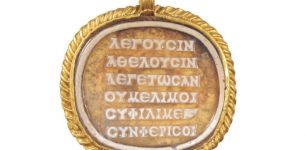 Almost Unknown Ancient Greek Text Rewrites History Of Poetry And Song
Archaeology | Sep 9, 2021
Almost Unknown Ancient Greek Text Rewrites History Of Poetry And Song
Archaeology | Sep 9, 2021 -
 Nomadic People’s 1,500-Year-Old Imperial Worship Unearthed In Hohhot, Inner Mongolia
Archaeology | Nov 18, 2020
Nomadic People’s 1,500-Year-Old Imperial Worship Unearthed In Hohhot, Inner Mongolia
Archaeology | Nov 18, 2020 -
 Secret Ancient Knowledge Of The Toltecs Examined
Ancient Mysteries | Aug 16, 2019
Secret Ancient Knowledge Of The Toltecs Examined
Ancient Mysteries | Aug 16, 2019 -
 Mysterious Devil’s Footprints In Maine – An Ancient Mystery That Will Never Be Solved
Featured Stories | Jul 9, 2017
Mysterious Devil’s Footprints In Maine – An Ancient Mystery That Will Never Be Solved
Featured Stories | Jul 9, 2017 -
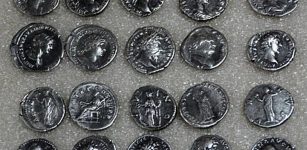 Bulgarian Archaeologists Find Nearly 3000 Coins In Clay Pot At Sofia Dig
News | Sep 8, 2015
Bulgarian Archaeologists Find Nearly 3000 Coins In Clay Pot At Sofia Dig
News | Sep 8, 2015 -
 1,500-Year-Old Marble Slab With Inscription Found On East Coast Of Sea Of Galilee
Archaeology | Dec 18, 2015
1,500-Year-Old Marble Slab With Inscription Found On East Coast Of Sea Of Galilee
Archaeology | Dec 18, 2015





